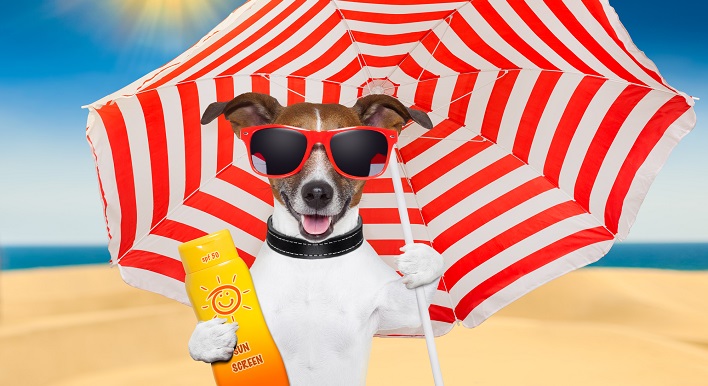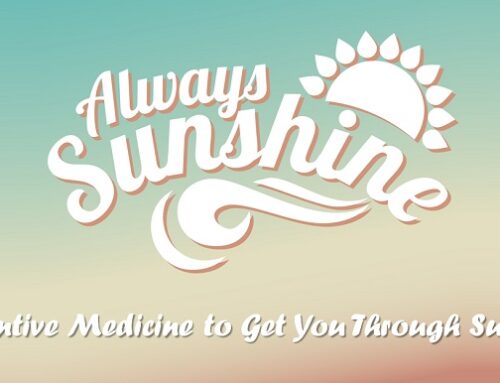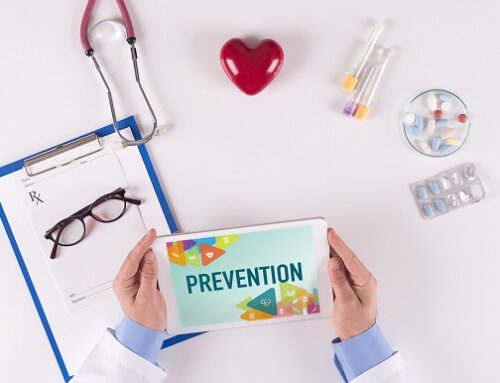By Maria Jauhar, M.D.
By now, you probably know that exposure to ultraviolet (UV) rays can be harmful, resulting in an increased risk of skin cancer and cataracts. What many people don’t know is that the beach – which many of us enjoy – is an especially risky place.
The main source of ultraviolet (UV) rays is the sun, which is magnified when spending time at the ocean, lake, or pool. UV rays are easily reflected off the water and sand, making you particularly susceptible to burning.
But you don’t have to stay inside all summer; there are some steps you can take to limit your exposure to UV rays – and keep in mind that your exposure isn’t just limited to those times you are near or in the water. Sun exposure adds up day after day, and it happens every time you are in the sun.
To protect yourself from UV rays, remember this phrase every time you go outdoors: Slip, slop, slap, and wrap.
- Slip on a shirt.
- Slop on sunscreen.
- Slap on a hat.
- Wrap on sunglasses to protect the eyes and skin around them.
Here are five other tips that will help protect your skin and eyes.
1. Seek Shade
The best way to limit your exposure to UV light is to avoid being outdoors in direct sunlight too long. UV rays are strongest from 10 a.m. to 4 p.m., so limit your time outdoors during this period. Also check the UV Index, which can be found on the Environmental Protection Agency’s website atwww.epa.gov/sunwise/uvindex.html
2. Protect Yourself with Clothing
When you are out in the sun, wear clothing to cover as much skin as possible. Clothes provide different levels of UV protection. Long-sleeved shirts, long pants, or long skirts cover the most skin and are the most protective. Dark colors generally provide more protection than light colors. A tightly woven fabric protects better than loosely woven clothing. Dry fabric is generally more protective than wet fabric.
Be aware that covering up doesn’t block out all UV rays. If you can see light through a fabric, then UV rays can get through, too.
3. Use Sunscreen
Sunscreen protects your skin from UV rays. However, you should know that sunscreen doesn’t block all UV rays. Even when properly applying and using sunscreen, some UV rays get through, which is why you need to use a variety of sun protection tools.
When buying sunscreen, read the label. Sunscreens with broad spectrum protection (against both UVA and UVB rays) and with sun protection factor (SPF) values of 30 or higher are recommended. And in case you didn’t know it, the SPF number is the level of protection the sunscreen provides against UVB rays, which are the main cause of sunburn. A higher SPF number means more UVB protection (although it says nothing about UVA protection). For example, when using sunscreen with SPF 30, you receive the equivalent of one minute of UVB rays for each 30 minutes you spend in the sun – or two minutes of UVB rays for every hour you spend in the sun. Unfortunately, many people often do not apply enough sunscreen, so their actual protection is less.
Sunscreens labeled with SPFs as high as 100+ are available. Higher numbers do mean more protection, but many people don’t understand the SPF scale. SPF 15 sunscreens filter out about 93% of UVB rays, while SPF 30 sunscreens filter out about 97%, SPF 50 sunscreens about 98%, and SPF 100 about 99%. The higher you go, the smaller the difference becomes. No sunscreen protects you completely.
Sunscreens with an SPF lower than 15 must now include a warning on the label stating that the product has been shown only to help prevent sunburn, not skin cancer or early skin aging.
4. Wear a Hat
Your ears, eyes, forehead, nose, and scalp are often exposed to intense sun, and these areas require extra protection. A hat with at least a two-inch to three-inch brim all around is a good form of extra protection. A dark, non-reflective underside to the brim can also help lower the amount of UV rays reaching the face from reflective surfaces such as water.
Baseball caps are not recommended, because they only protect the front and top of the head, but not the neck or the ears, where skin cancers commonly develop.
5. Wear UV Sunglasses
UV-blocking sunglasses are important for protecting the delicate skin around the eyes, as well as the eyes themselves. Research has shown that long hours in the sun without protecting your eyes increase your chances of developing certain eye diseases.
The ideal sunglasses should block 99% to 100% of UVA and UVB rays. Before you buy, check the label to make sure they do. Labels that say “UV absorption up to 400 nm” or “Meets ANSI UV Requirements” mean the glasses block at least 99% of UV rays. Those labeled “cosmetic” block about 70% of UV rays. If there is no label, don’t assume the sunglasses provide any UV protection.





